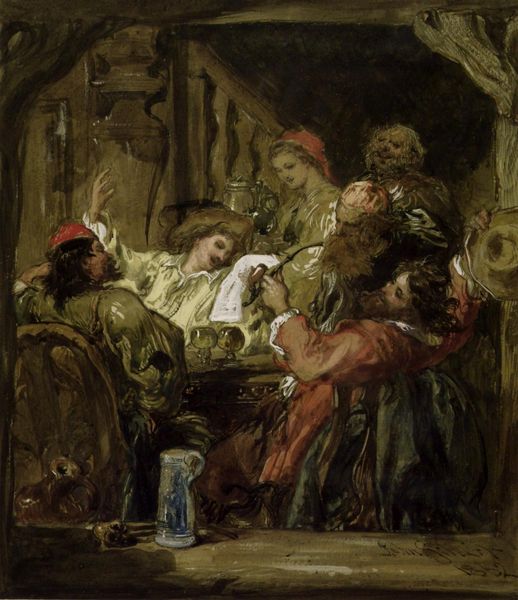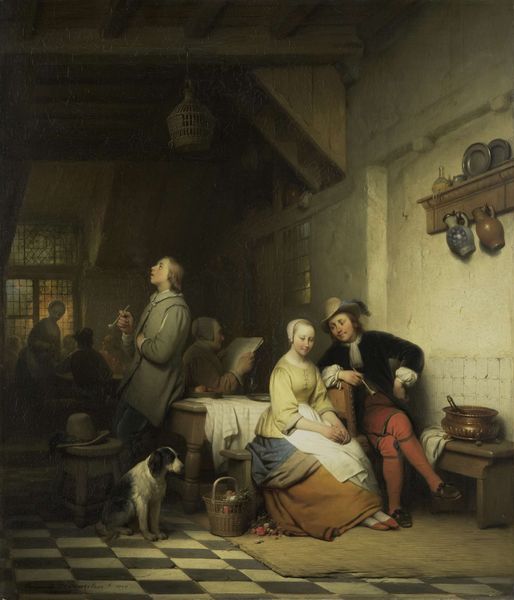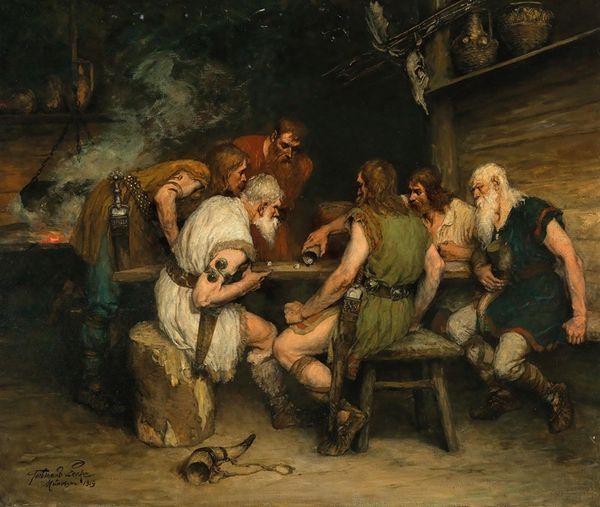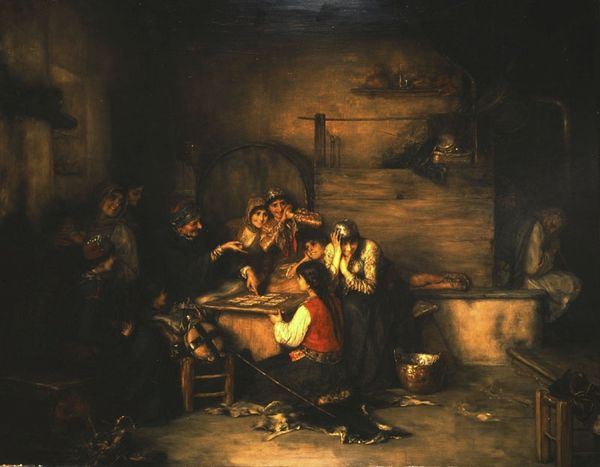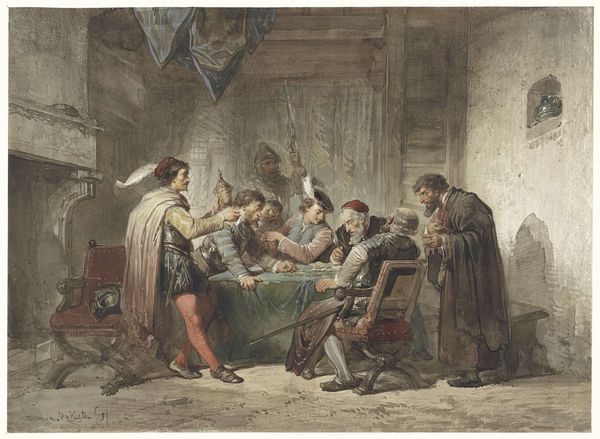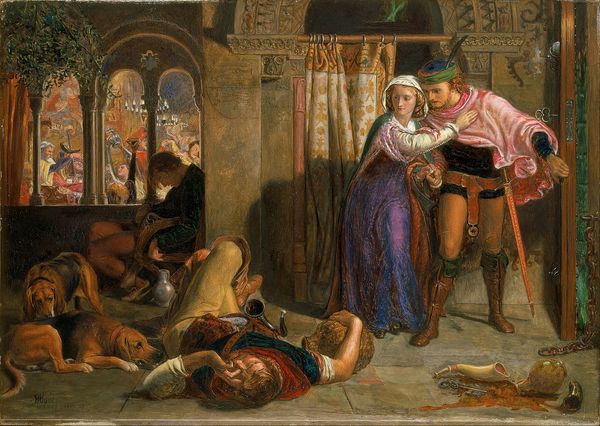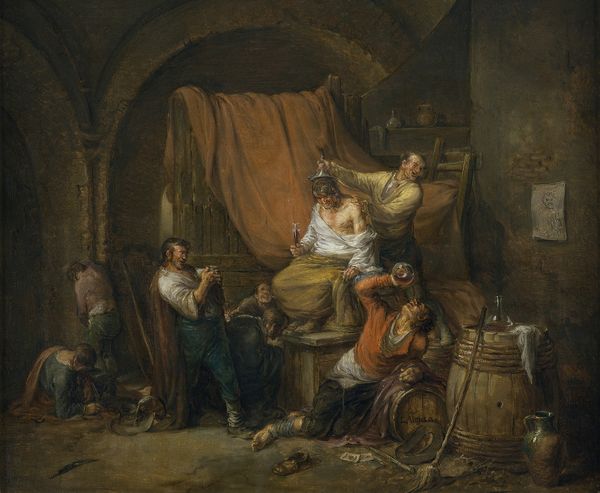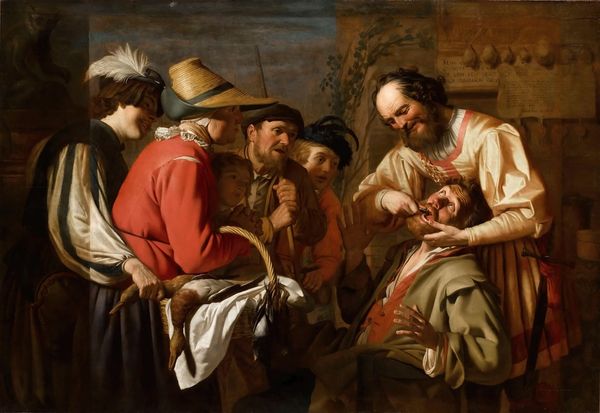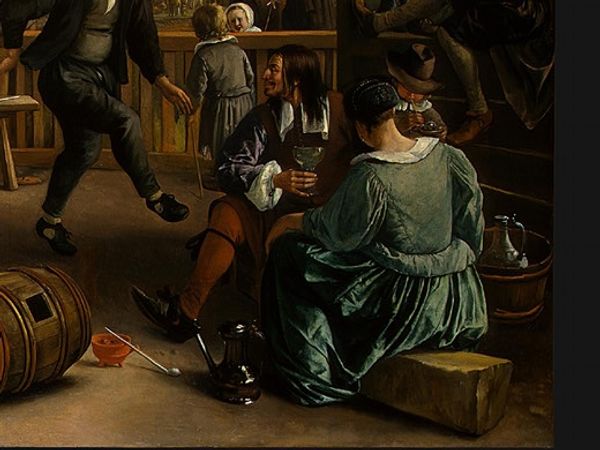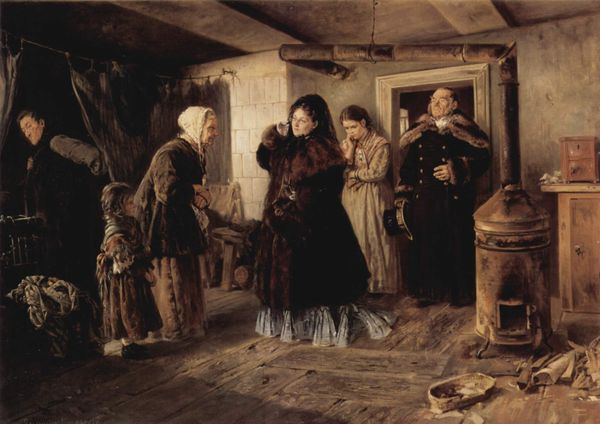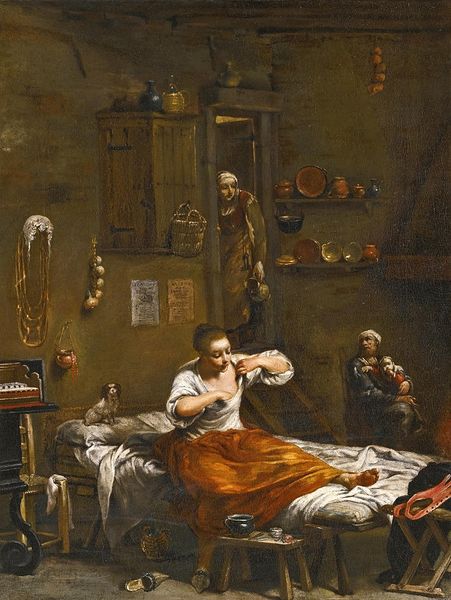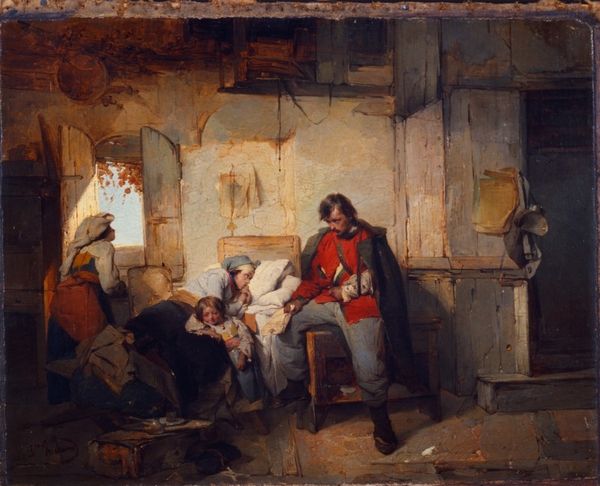
Copyright: Public domain
Curator: Let's discuss Albert Maignan's "Chlodobert's Last Moments," an oil painting completed around 1880. You'll find it residing at the National Gallery of Victoria. My first impression is one of stark contrast. The almost luminous, vulnerable body of Chlodobert set against the cold, tomb-like stone surrounding him. Editor: Indeed. The materiality here is telling, the artist sets the tender with the stone-like to tell a tale of process, particularly what it would have taken to achieve this contrast of surfaces with painting as medium and material. We get such deep insight into cultural priorities when we look at material production choices. Curator: Absolutely. Beyond the medium, consider the iconographic weight. Chlodobert, depicted nearing death, is mourned by figures laden with symbolism. Note the gestures—the mourning, the pointing, all directing our focus toward the inscription on the tomb behind. Medardus, perhaps a saint's tomb, known for faith healings? Is the historical context about the importance of sainthood and relics at this time, given what the men may expect out of being buried near him? Editor: You bring up a great point; if one considers relic, there's material attached to holiness, whether body or grave material that brings certain expectations of worth and of promise that are material as much as they are ethereal. Curator: Exactly! And Maignan presents this beautifully within the conventions of academic art, with precise details. But it’s those very details – the somber blues and purples of mourning, the hard textures of the tomb juxtaposed against the skin – that create an emotionally charged space. It's the symbolic importance given to the materials in and of themselves that amplifies the scene. Editor: Right, from an academic perspective, we could assume all painting carries social capital because time and labour can be visualized and it stands against modern industry; what I am more concerned with are those other materials. To what extent, can painting truly transcend all other material hierarchy, such as religious grave sites that you have talked about? Is it merely an appropriation, or some form of high regard that would influence an afterlife that may be painted? Curator: It's that tension between historical, spiritual, and material weight that I find compelling. Maignan seems to question – or at least contemplate – what gives objects their power. Editor: For me, the real power of Maignan’s work resides in its ability to foreground the value society puts on objects. I hadn't considered its thematic approach before.
Comments
No comments
Be the first to comment and join the conversation on the ultimate creative platform.
